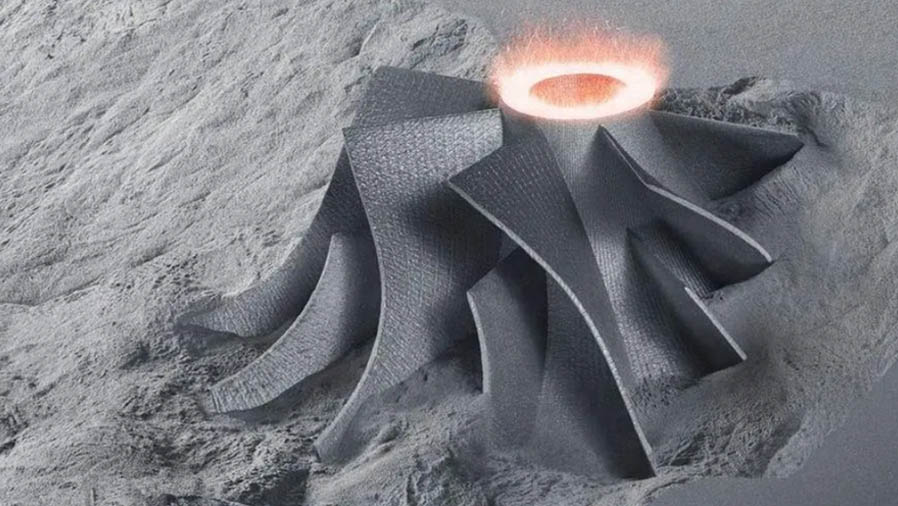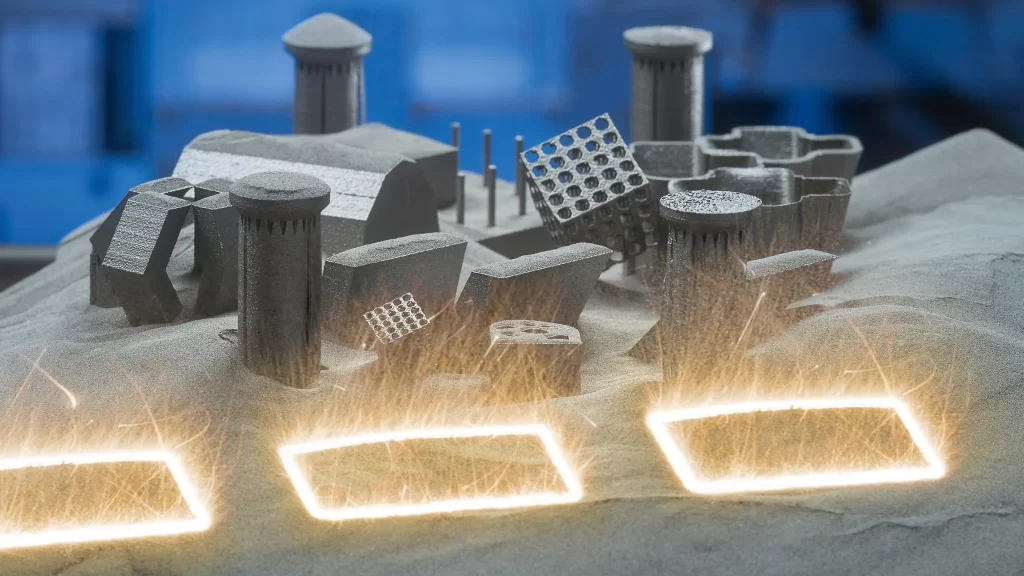Imagine if you could create complex geometries and durable parts without breaking a sweat—or a bank! Welcome to the world of SLS 3D printing, where precision engineering meets the freedom of design. But before you think this is some futuristic mumbo-jumbo, let me assure you, it’s been around since the 1980s. Yet, like a fine wine, it’s only getting better with age.
What is SLS 3D Printing?

Selective Laser Sintering (SLS) is a form of additive manufacturing that uses a laser to fuse powder-based materials layer by layer. Think of it as a meticulous artist painting layer upon layer until a masterpiece is born, except instead of paint, we’re using high-performance materials like nylon. This technology is a game-changer in the realm of digital fabrication, offering unmatched possibilities in custom manufacturing.
The Science Behind the Magic
Here’s the lowdown: SLS works by scanning a laser across a bed of powdered material, typically nylon, to sinter the particles together. The process is repeated layer by layer until the final product emerges. The beauty of this technology lies in its ability to create complex geometries and lightweight structures with minimal waste. It’s like baking a cake, but without the calories!
Advantages of SLS 3D Printing
Why should you care about SLS 3D printing? Well, if you’re in any industry that values precision, durability, and low-waste production, then this is your holy grail. Here are some key benefits:
- Design Freedom: SLS allows for intricate designs that would be impossible with traditional manufacturing methods. Whether it’s a lattice structure or a complex interlocking part, SLS makes it possible.
- Durable Parts: The materials used in SLS are robust and can withstand significant stress, making them ideal for functional prototypes and production-grade parts.
- Low-Waste Production: Since the process uses only the material needed for the part, it significantly reduces waste—something the planet could use more of.
- Rapid Prototyping: Need a prototype yesterday? SLS can produce rapid prototypes faster than you can say “selective laser sintering.”
Applications Across Industries

SLS isn’t just for tech geeks and engineers; it’s a versatile tool used across various industries. From aerospace to fashion, SLS is making waves.
Aerospace and Defense
In industries where weight and strength are critical, SLS shines. Aerospace companies use it to create lightweight structures that maintain high strength-to-weight ratios. Think of it as the Hercules of 3D printing.
Automotive
In the automotive world, SLS is used for rapid prototyping and even custom parts manufacturing. Need a one-of-a-kind gearshift knob? SLS has got you covered.
Healthcare
Custom prosthetics and implants are no longer science fiction. With SLS, bespoke medical solutions are possible, offering patients personalized healthcare like never before.
The Role of High-Performance Materials

Materials are the unsung heroes of SLS 3D printing. While nylon is the most commonly used, other materials like carbon-filled nylon and polyamide are making their mark. These high-performance materials allow for stronger, more durable parts that can withstand the rigors of industrial use.
Nylon 3D Printing
Nylon is the darling of SLS 3D printing, offering a balance of strength, flexibility, and cost-effectiveness. It’s like the Swiss Army knife of materials—versatile and reliable.
Advanced Materials
For applications requiring enhanced properties, advanced materials such as glass-filled or aluminum-filled nylons are available. These materials offer improved thermal and mechanical properties, making them suitable for demanding environments.
Challenges and Considerations
While SLS 3D printing offers numerous benefits, it’s not without its challenges. The initial cost of equipment can be high, and the process requires skilled operators to ensure optimal results. Additionally, post-processing can be time-consuming, involving steps like depowdering and finishing.
Cost Considerations
The initial investment in SLS technology can be steep, but the long-term benefits often outweigh the costs. Companies must weigh the upfront expenses against the potential for reduced material waste and increased production efficiency.
Skill Requirements
Operating an SLS 3D printer isn’t as simple as hitting “print.” It requires a deep understanding of the technology and materials involved. Companies must invest in training to fully leverage the capabilities of SLS.
The Future of SLS 3D Printing

As the technology advances, SLS 3D printing is poised to become even more integral to various industries. Innovations in materials and machine capabilities will likely expand its applications, making it a cornerstone of advanced manufacturing.
In conclusion, SLS 3D printing is not just a technological marvel; it’s a testament to human ingenuity. Whether you’re in aerospace, healthcare, or any industry in between, the possibilities are as limitless as your imagination. So, go ahead, dream big and print bigger!
“`